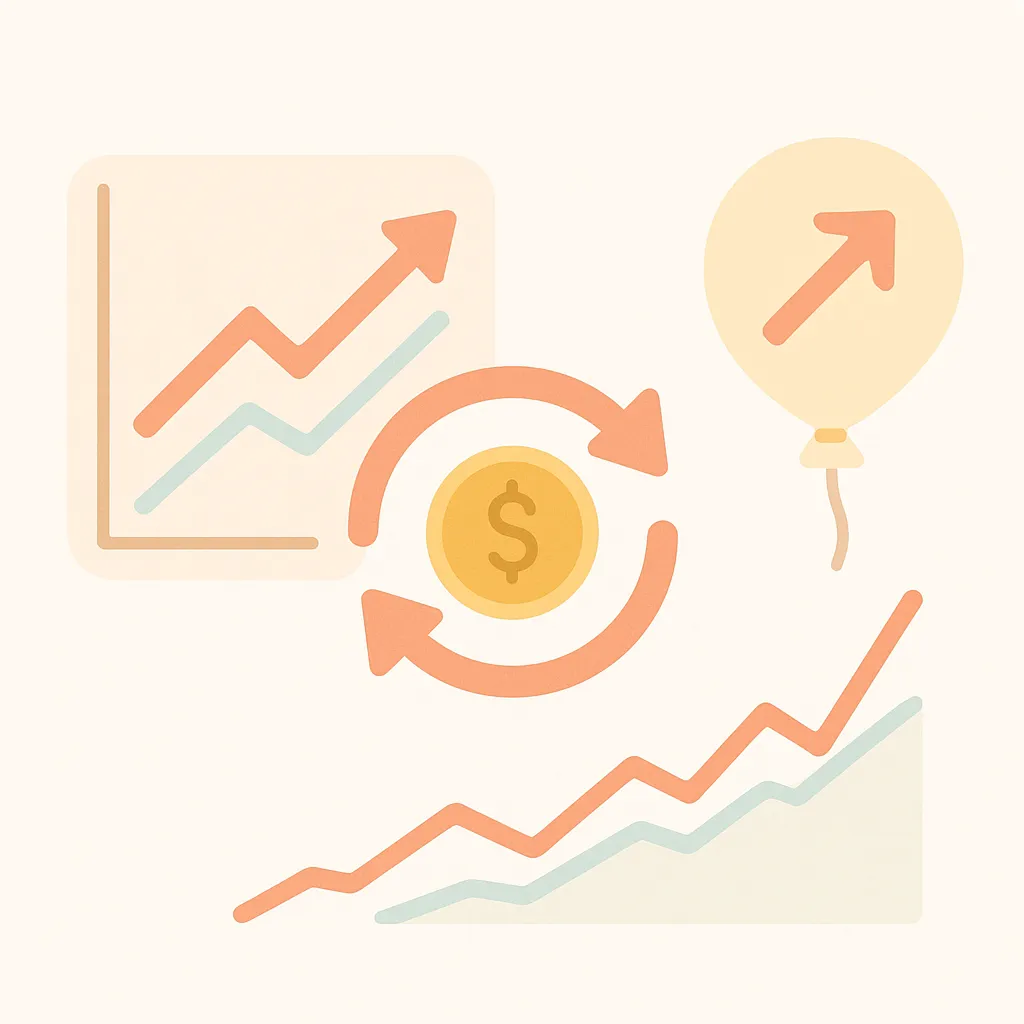Defining Inflation and Why It Occurs - Part II
3. Seeing Past the Sticker Price of Interest
1. Why short-term savers must think in real terms
Because the typical emergency fund or vacation-savings pot will be tapped within twelve to twenty-four months, what matters is not the eye-catching annual percentage yield (APY) printed on your banking app, but the amount of groceries and plane tickets the balance will actually buy when you need the cash. In April 2025 the headline Consumer Price Index was running at 2.3 percent year over year[15] while the national average savings account yielded just 0.56 percent APY[16].

That gap translates into a negative real return of roughly –1.7 percent: every $10,000 parked in a low-yield account silently loses about $170 of purchasing power in twelve months. During the 2022 inflation surge the erosion was faster, with price rises above 7 percent and many branch-bank accounts paying almost nothing, wiping out an entire week’s food budget for a median household.
Looking at returns through an inflation lens nudges savers toward tools that at least track CPI—Treasury I-Bonds, one-year TIPS funds, or high-yield online accounts now paying around 4.3 to 4.5 percent[17]. Thinking in real terms, not nominal, is the surest way to keep short-term goals on course.
2. Decoding nominal and real returns
Nominal returns include inflation effects, whereas real returns adjust for inflation, reflecting true purchasing power. Think of the nominal figure as the number that flatters you on paper and the real figure as the one that determines how many lattes or gallons of gasoline you can buy next month. The quick-and-dirty formula is Real ≈ Nominal – Inflation; the Fisher equation offers a precise version but the intuition is identical[18].
For wages the arithmetic is the same. In January 2024 average hourly pay rose 0.6 percent, yet with consumer prices up 0.3 percent the Bureau of Labor Statistics calculated a real gain of only 0.3 percent[19].
Investors also misjudge performance when they forget the adjustment. A bond fund that posts a 5 percent total return looks attractive until you subtract 3 percent inflation and 0.5 percent in fees, leaving a real gain of roughly 1.4 percent—barely above a high-yield savings account. Conversely, when inflation dipped below 1 percent in 2020, even a modest 2 percent bank certificate provided meaningful growth in purchasing power. Translating every headline rate into real terms turns an abstract economic concept into a practical decision tool.
1. The 1980 passbook paradox
In 1980 U.S. inflation hit 13.5 percent—its highest post-war reading, yet federal regulation capped passbook savings rates at 5.5 percent. Savers therefore earned a brutal –8 percent real return despite their balances “growing,” a cautionary tale that still haunts finance textbooks.
4. How Rising Prices Reshape Financial Promises
1. Fixed Commitments Lose Real Weight
Inflation is a sneaky tax on any contract that promises a fixed number of dollars rather than a fixed slice of purchasing power. When consumer prices climb, every future mortgage, car-loan, or corporate bond payment is made with dollars that buy less coffee, gasoline, and labor than they did when the note was signed. The U.S.
Congressional Budget Office estimates that a sustained 3 percent inflation rate can shave roughly one-tenth off the real burden of a 30-year fixed-rate mortgage after just five years [20]. For pensioners, however, the same process cuts both ways. Traditional defined-benefit plans that lack automatic cost-of-living adjustments (COLAs) see their promised checks erode in value, while Social Security—which has included annual COLAs since 1975—protects retirees by indexing benefits to the CPI [21].
Renters face a mixed picture: long leases with fixed rents become bargains in real terms, but landlords in markets without rent controls often reset prices upward once contracts expire, transferring inflation risk to tenants. Thus, the direction of the squeeze depends on which side of the fixed payment one sits.
2. Why Borrowers Cheer, Lenders Fear
For households and firms that locked in loans at yesterday’s low nominal rates, an unexpected burst of inflation can act like a windfall. Suppose a family secured a 4 percent, 30-year mortgage in 2021; if prices now rise at 5 percent, their real interest rate is effectively negative, meaning the purchasing-power value of what they owe shrinks by roughly 1 percent a year before any principal is repaid [22].
Lenders, meanwhile, earn interest that buys less with each coupon. Central banks try to forestall this by hiking policy rates, but fixed-rate contracts already inked stay untouched, so existing borrowers ride the gap.
There are caveats: wages must keep pace for borrowers to stay solvent, and variable-rate or short-term debts quickly re-price, diluting the advantage. Investors in Treasury Inflation-Protected Securities (TIPS) or pension funds with explicit COLAs similarly shield themselves, illustrating that the key defensive tool in an inflationary world is indexing payments—not the face value of the promise.
1. COLA Birthday
The first automatic Social Security Cost-of-Living Adjustment took effect in June 1975, raising benefits by 8 percent after the OPEC-driven price spikes of the early 1970s; before that, increases required an act of Congress!



